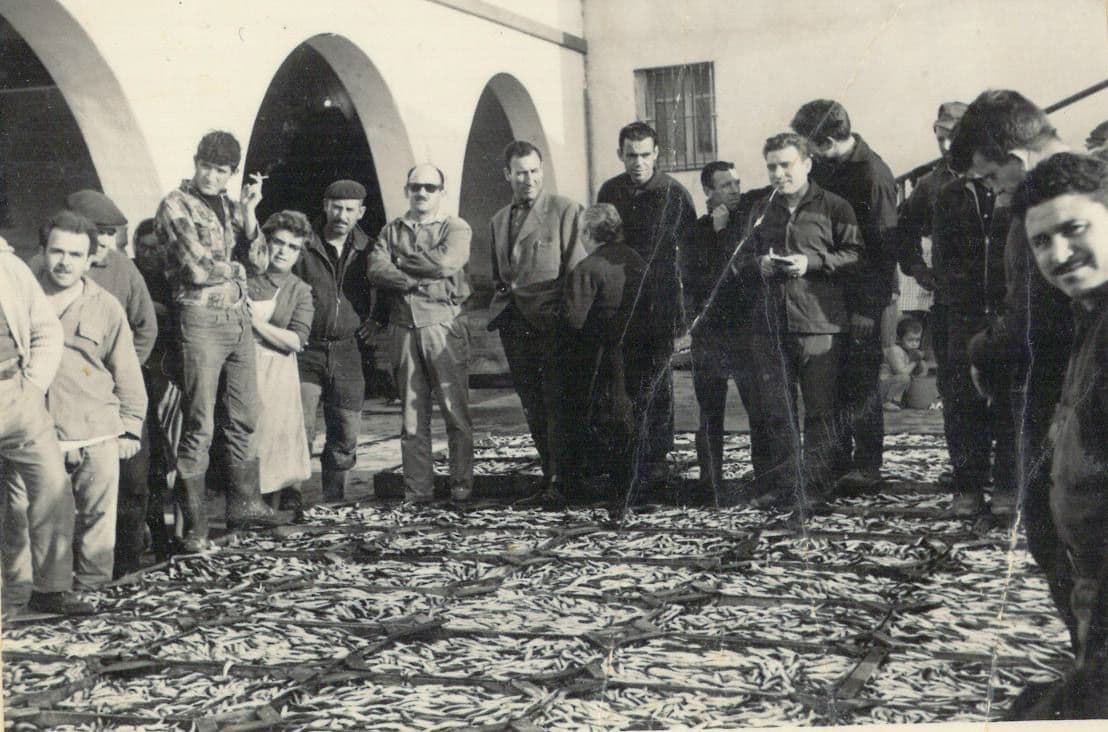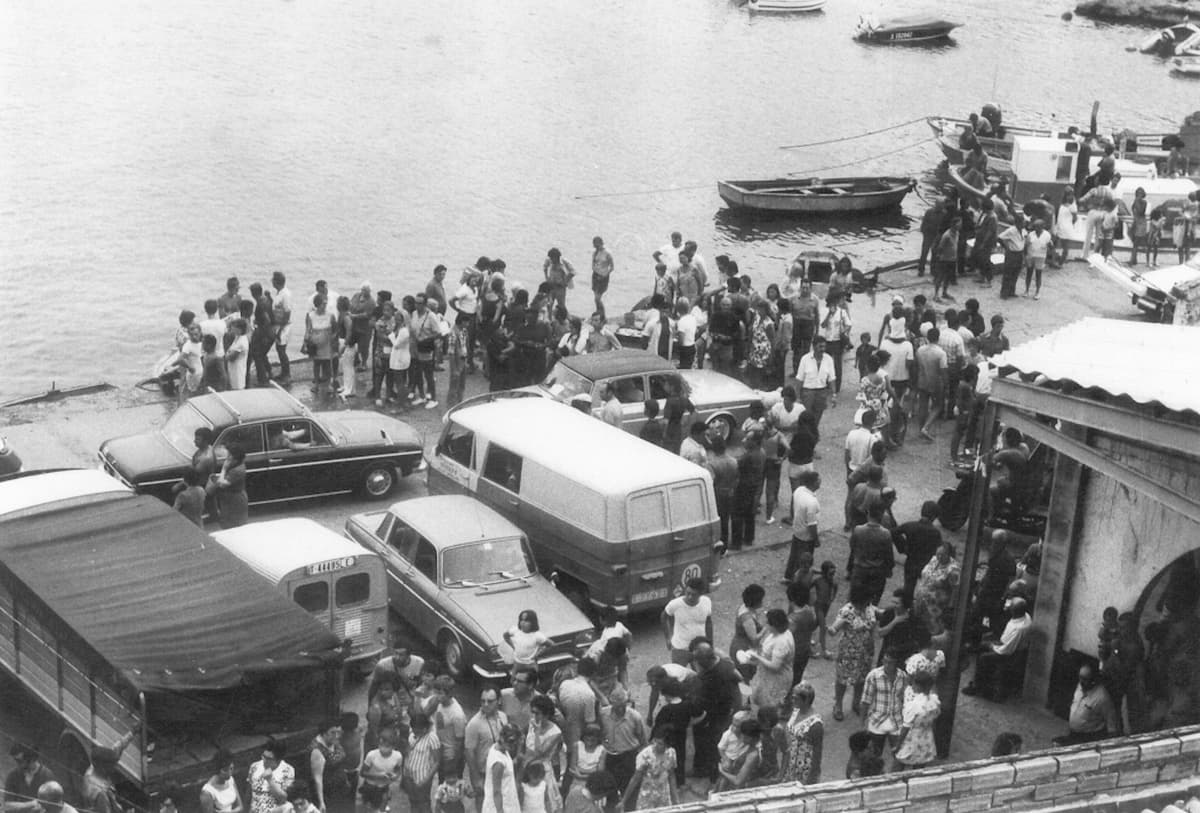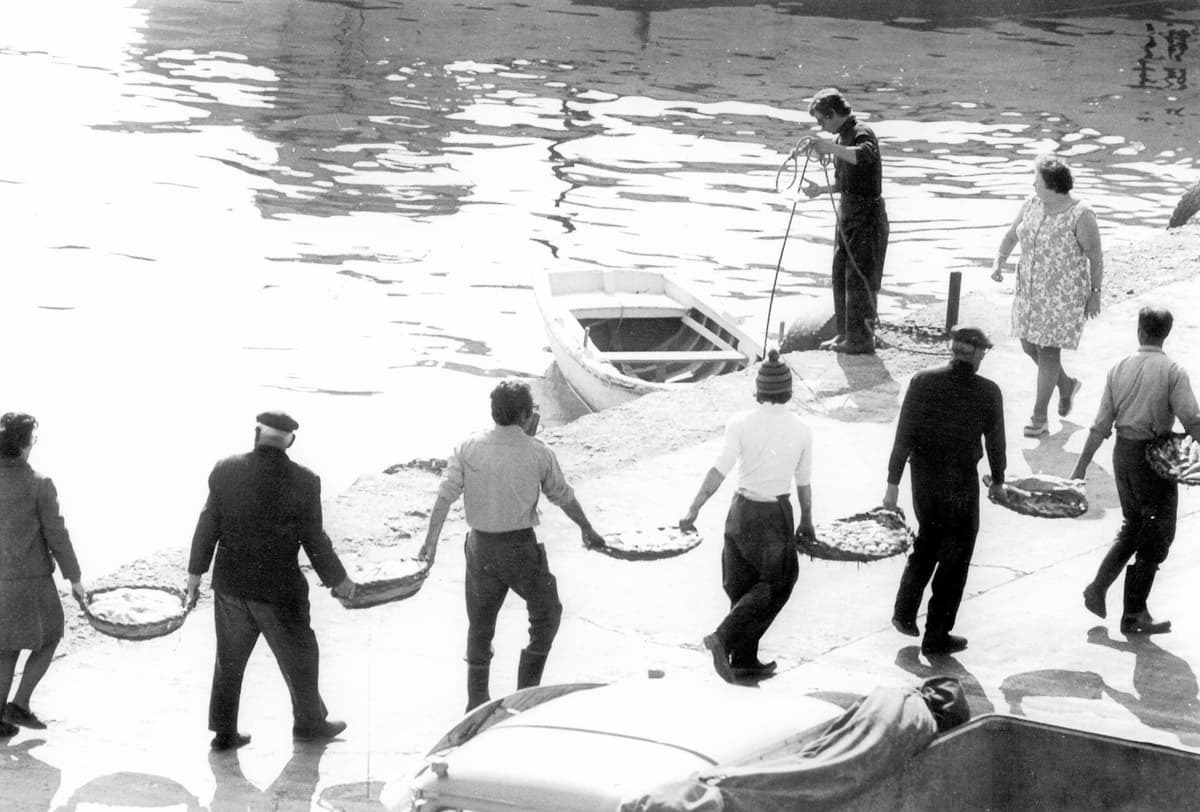History of the Fishermen's Brotherhood
The Sant Pere Society is the first economic bastion that stands out in the Cala, after its independence (December 1891) as a management and administrative entity for the distribution of the fish caught, basically by trawling in pairs.
The Sant Pere Society has all the characteristics of a private guild society, which was normally controlled by a privileged social class, which was the one that had a certain economic power and that administered the sectors of the Spanish economy, which at that time, in a non-industrialized society, was based on raw materials (agriculture, livestock, and fishing).
The pluralization of political ideals and the very strength of the popular classes was what put an end to the guilds, since the people who were at the head of these societies created what was called "caciquismo" and even managed to control the votes in the then restricted electoral census.
Thus, located its birth, its location was that of the old Fishermen's Guild. The person responsible for the administration of the Lonja was the so-called Mosquellut, from Castellón, and whose family now resides in Vinaròs. Mosquellut was the person in charge of managing both the collection of the muleteers' fees and the payment of the boats, and he, as the managing party, kept 1% of the capital mobilized.
Around this private society, an organization was created among the fishermen that had a certain parallelism with the same society, but in fact, it had nothing to do with it, because the group of boats, as a basic element of propulsion of the town's economy, had intrinsic needs that had to arise from the same group, and that needed a common maintenance process, and that demanded a certain organization, so that at the same time the minimum standards for the good functioning of the same group were met, such as for example the dredging of the Estany port, for which the boats left 12 pesetas each week, since the port was dredged every year in the dismantling for the closed season, starting in the month of May. For example, the control of infractions for non-compliance with the imposed regulations, or, of the infractions in case of collision between two boats.
A board of fishermen, normally skippers and shipowners, was in charge of this task, and whose first president was Batista Garcia y Gallart.
Batista García y Gallart has a significant relevance in the town because he was, at the time (1890 onwards), the main shipowner of the town of Cala. Owner of two sailing couples; he built a block of houses for his sailors, which are still inhabited, known now (as Ximo's little houses) by a descendant of his.
He is possibly the man who drove the Sant Pere society at an organizational level. A serious man and concerned about all the problems of the sea.
The election method of the president of the Sant Pere society was based on voting by show of hands, which led to the phenomenon of the number of presidents in a short period of time, because in each action that was not pleasing to the majority of the owners, he was automatically dismissed and another was appointed.
"El Pósito de Pescadores" The "Pósito de Pescadores" was founded in 1923 and its inauguration was attended by Alfredo Salaregui, who was a frigate captain. Salaregui was one of the founders of the fishing deposits throughout Spain. Josep Farnós i Llorca served as president at its foundation and Reinaldo as secretary.
Around the 1930s, technology brought us a new element that would later shake up the entire fishing status of the area: the appearance of the combustion engine, which on the other hand, expanded the administrative tasks of both the deposit and the Sant Pere society, and the supply of fuel. The bou pairs automatically lost their hegemony and moved on to the mixed type “crutch”, which without losing the sails, at the same time, were acquiring small engines that due to the fuel restriction were only used from time to time, when the situation most required it.
When the war began, on July 18, 1936, the two entities were united in the Fishermen's Pósito. This union lasted 8 days, then it was militarized, it changed its name and was called Cooperativa e Industria Pesquera C.N.T., U.G.T. Although militarized, it continued to have its president. This cooperative began to control all the sale of fish and the administration, both in the collection of fees from the boats, from which it kept 2% of the amount paid, and in the control of fuel and its supply. After the war, almost all the employees fled to France. We already have written evidence of all the subsequent events.
On August 13, 1939, the composition of the Fishermen's Pósito was formally established.
The Port and the Storms The boats docked at the natural quay of the Estany, but they necessarily docked at the quay to sell the fish. It was urgent that the town had a port that could house the ever-increasing fishing fleet. The quay was built around 1903 and was lit by torches. The first section of the point that emerged from the beach of l’Alguer was built around 1929. But it was in 1942, on January 18, when the storehouse signed a private contract with a construction company “Pujades i Jorba” to build a port. We have to go back to 1969 to see works around our rocky outcrop, and all the seaweed in front of García’s icebox, in Cova Gran, was converted into a beautiful breakwater, which advances, eating up the sea like a tongue eager to have the boats next to it to shelter them from the Minjor: it was the “Contrapunta”.
The subsequent expansion of the port is relatively modern, extending the tip of the dock and drawing a parallel to the same breakwater of the "counterpoint", this coming out of the eastern tip of Cala Pepo.
Evolution During the first half of the 19th century, the fishing industry proved to be the fundamental element of subsistence for the few families who lived in our small cove.
During these first fifty years, it was not possible to achieve the development of the fishing sector, despite the magnificent prospects, since from the settlement of the first human contingent in our neighbourhood, towards the last quarter of the 18th century, until the middle of the next, sometimes due to the economic situation, other times due to the war events in which our country was immersed, the ability to transform this subsistence fishing activity into a commercial one was slowed down.
The necessary impetus to stimulate this economic area came well into the second half of the 19th century, with the appearance of new types of fishing gear, with the investment of capital by the most prosperous local houses and regional landowners; with the appearance of the railway (1860-1870), which opened up new markets for us and, towards the end of the century, with what was meant by the conversion of the rail telegraph into a public service, which definitively and decisively affected commercial relations by allowing information on prices, with the consequent adaptation of supply and demand in the markets.
Simultaneously, with this evolution of the fishing sector, there was the awakening of a strong class consciousness on the part of the sailors, which would encourage them to join unions.
It was therefore necessary to find an institution that would unite all the sailors, that would look after their needs, both personal and collective, and put an end to the arbitrary acts that were so frequently committed.
What was historically called the Sant Pere Fishermen's Society was going to be created. Of this brotherhood, we do not know the exact date of its constitution.
As for the organization of the society, we really know little; It is known, however, that it was organized on two levels. On the one hand, there was what was called the “Junta de la Marinería” (Marinery Board), whose composition we know from 1882, made up of 45 members, representing the entire local membership. We know that from this arose a “Local Fishing Board”, which would be made up of the president of the society and six representatives of the various fishing arts and fish exporters. Of this, we have evidence of the one from 1907.
Although it is true that at first the society presented omens of prosperity and progress and a climate of good coexistence, problems would soon arise, which would translate into a polarization of the attitudes of the members of the guild regarding what the entity was and how it should function.
This antagonistic behaviour created within the guild, helped by political pressures of all kinds, led to our town experiencing days of great tension towards the end of the last century, which would culminate in the temporary closure of the “Pes”.
Although the conflict was increasing, we would have to wait until 1923 to witness the total crisis of the Sant Pere Fishermen's Society. A sector of members, who at a local level were considered left-wing, formed the Pósito de Pescadores, an entity that was born as an association of fishermen who pursued the complete redemption of said social class, promoting culture among its members and exploiting, without the help of intermediaries, the fishing industry.
Although the sailors joined one or another organisation, in many cases they did not do so for ideological reasons, since, as is public and well-known, many people were economically dependent on one or another person in the town, which necessarily linked them to one of the two societies.
Time passed and the two societies, with their rivalries, were inexorably heading towards one of the most interesting, but also most dramatic periods of our recent history: the Second Spanish Republic (1931-1939).
When the civil war began (1936), the Pósito exercised total management of the fishing sector, which soon passed into the hands of a movement that emerged within the organisation and was led by the anarchist union C.N.T. and the socialist U.G.T., which would lead to the creation of the Fishing Industry Union C.N.T.-U.G.T.
Once the fratricidal struggle that hit the country during the three-year period 1936-1939 was over, Spain needed the establishment of organizations that would reestablish activity in the various sectors of production.
In the specific scenario of l’Ametlla, the survival of the guild institutions that had previously coexisted was logically not possible.
The Fishermen's Warehouse and the Fishermen's Society of Sant Pere were plunged into a rhythmic historical rhythm from which they would never wake up. But as the local fishing sector could not remain unattended, an interim commission was formed, created by the national delegate for fishing (24/01/1939), eleven days after the troops of General Franco's army entered l'Ametlla, which would have as its priority objective to structure what was to be the new fishing society: The Fishermen's Guild.



